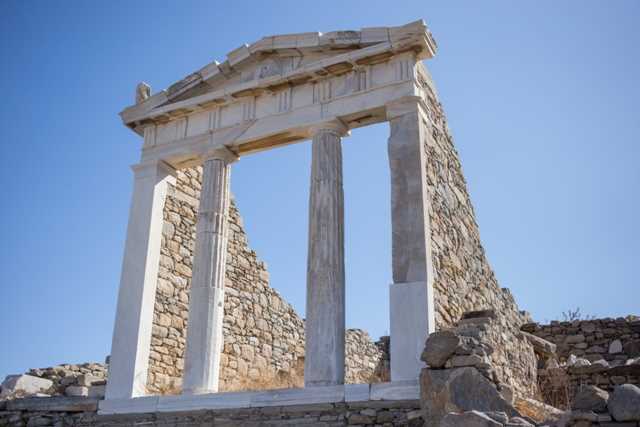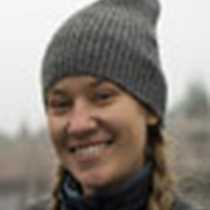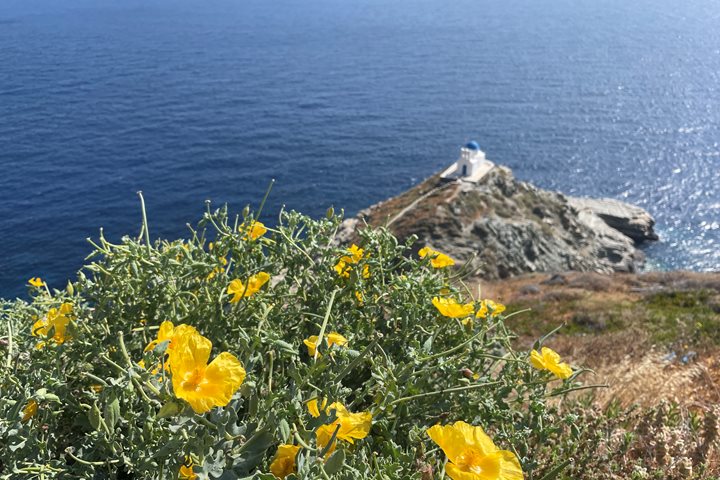The wind picked up as we sailed out of the Santorini Caldera last night. As we left this magical place, we had one of the most lingering and glorious sunsets of the trip. However, a “rosy fingered dawn” arrived by 6 a.m. on the morrow with a fresh breeze and cool temperatures in the low 60s.
Our wonderful guides, Stella and Ellie, led us on our exploration of this uninhabited and historically crucial island. The island of Delos has seen habitation for at least 4,000 years, long before the Greek speakers arrived. The Ionians came here around the year 1,000 B.C.E. and brought the legend of Apollo with them when they established the annual Delia festival. Myth has it that Leto, pregnant from her affair with Zeus, was seeking a sanctuary from his jealous consort Hera to give birth to her son and daughter, Apollo and Artemis. Zeus had the unfortunate habit of consuming his children so that he would never have any rivals. Leto gave birth to the twins at the edge of the sacred lake. Artemis, who became the chaste goddess of the hunt, was born first, followed by her twin Apollo, the god of the sun and rationality. Delos soon became a place of pilgrimage for the island Greeks and this in turn led to its becoming a bustling commercial center with a population of some 30,000 by the 1st century B.C.E. Athens made Delos the center of the first Delian League, the first Athenian naval confederation in 478, making Athens the leading city-state amongst the Greeks.
Because of its commercial success, Delos also attracted a cosmopolitan clientele. One can find temples to foreign gods here, like the Temple of Isis, an important Egyptian goddess. Twenty years ago, I was stunned to find a carving of the Carthaginian Punic goddess Tanit, the consort of Baal Hammond and Mallart, in the floor of the “House of the Masks.” I was surprised to see her image in a site so devoted to Apollo and Artemis. Yet the Greeks were tolerant of the worship of other gods, if they did not intrude on the sacred sanctuary of their gods. Delos also has a theater constructed out of a hill with sides reinforced with cyclopean stonewalls. Once that was completed the stone seats were added, and it could hold about 6,000. The museum on Delos, which we all visited, has some very fine Hellenistic era busts. The late Hellenistic period saw Greek sculpture joined with the Roman penchant for realism, and some of the finest busts of men and women date from this period.
After lunch Tom Heffernan gave a lecture on the evolution of the Greek language, discussing the decipherment of the Cretan Linear B. About 4:30 we boarded tenders for our visit to the “green island” of Naxos. Few were prepared for the magical visit to the labyrinth of small lanes which snaked upwards from the harbor to the very top of the “Castro” where the Venetians built the Cathedral of St. Mark in the early years of the 13th century. We all found Naxos enchanting, and as a testimony almost half the group decided to remain in town and have dinner along the captivating waterfront.









